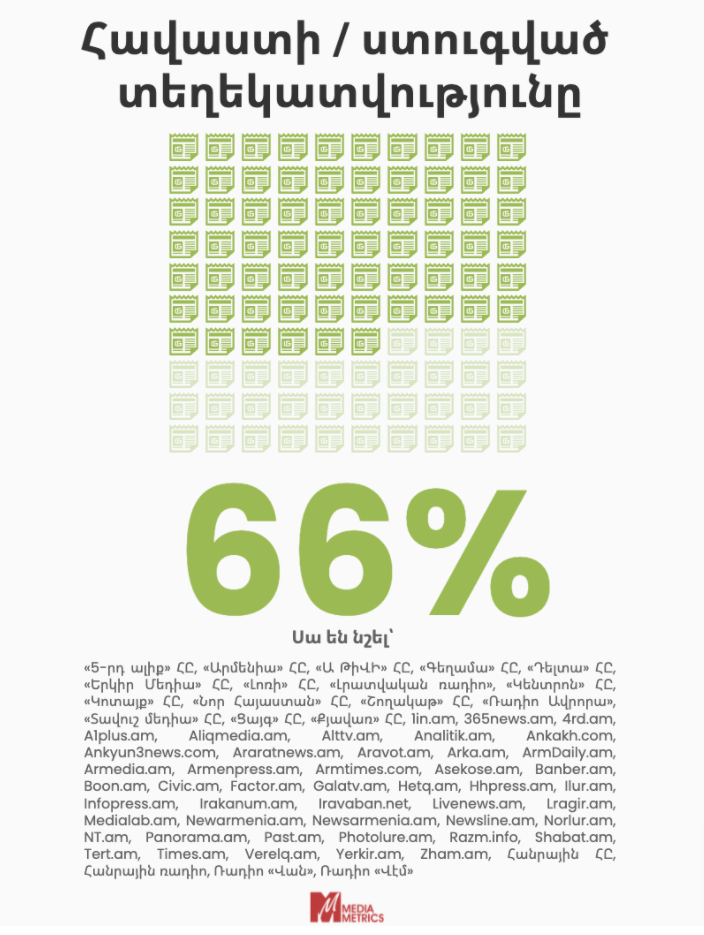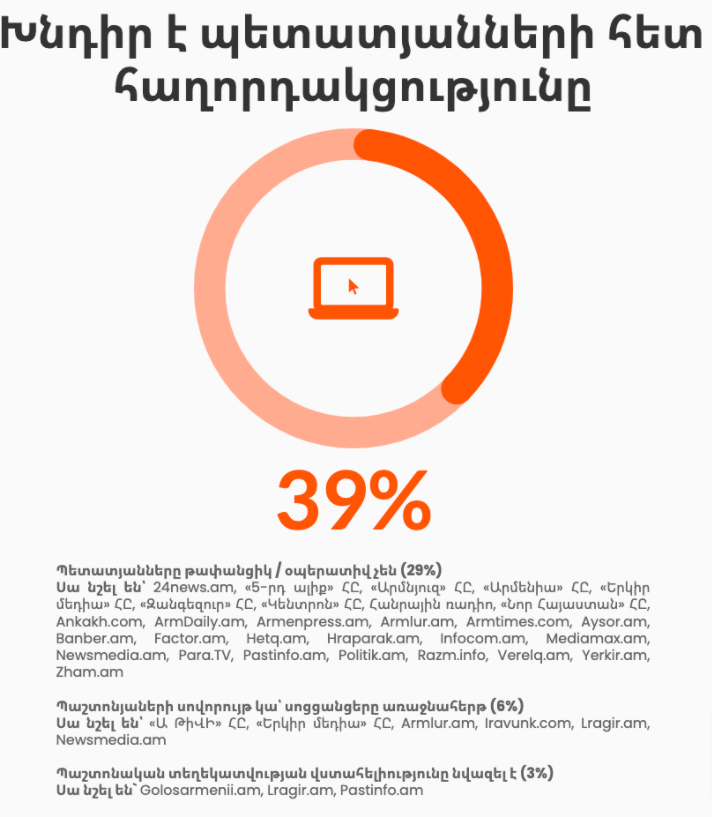
The “Region” research center conducted a survey among the heads of 100 different media outlets in Armenia on the topic “Armenian media in the age of social networks.”
The survey was conducted by the heads of 74 online media outlets, 26 TV and radio companies (editors, deputy editors, founders, directors, heads of news services).
The research revealed the purposes for which the media use social networks and how they affect their activities.
There is no media outlet in Armenia that does not use Facebook
Thus, the media in Armenia have different social network pages for different purposes, most of which are presented on Facebook. Then there are YouTube, Telegram, Instagram, Twitter.
17 media outlets use YouTube more often, because the information there is easier to assimilate, spreads quickly, and YouTube is a platform for working with a young audience.
83% of the 100 media outlets use 2-6 social networks at the same time, although they state that using the networks, in general, requires additional resources. But they cannot avoid using it, because they will fall behind modern trends and their colleagues.
“We have only one media outlet, the ‘Republic of Armenia’ newspaper, which uses nine social network platforms at the same time. 4 media outlets use only one social network, Facebook. “There is no media outlet in Armenia that does not use Facebook,” said Laura Baghdasaryan, Director of the Region Research Center, while presenting the results of the research.
What tools are social networks for media?
94 out of 100 media outlets reported that it is a platform for disseminating information, through which they distribute their products and present them to the audience. 56% of the respondents mentioned that social networks are a source of information, where a large amount of information is generated, there are different groups, interesting users, etc. And in this sense, networks become a platform for exclusive information.
Many mentioned that they use the networks to provide traffic, they admitted that if it were not for the networks, they would not have so many visits. More than half of the visits are provided through these platforms.
There were 8 media outlets that reported that in addition to these three tools, social networks are used to better study their audience: age, preferences, etc. As well as to create a community around the media.
Are social networks a source of information of public importance?
80% of the respondents said yes because there are a huge number of people on social networks. They also spend a lot of time there to get information, bypassing the media.
18% said both yes and no. Those who mentioned hate speech, fake news, etc. particularly said no.
The head of only two media outlets said that social networks are not a source of information of public importance, reasoning that they are more a bridge to other sources than a source of information.
One of the reasons is that there is no guarantee of information reliability in the networks.
Most media executives have a bad attitude towards the authorities’ social network communication
A huge amount of information has been generated on social networking platforms, especially since in recent years the Armenian authorities have first disseminated the information on their web pages, and then posted it on the official websites of the departments with a delay.
“In my personal opinion, this has become the reason why other political forces have also started to actively use social networks as a platform for information circulation,” said Laura Baghdasaryan.
The attitude of the media representatives to network activity is quite different, 31% of the respondents definitely stated badly, 29% – normal, 27% – positive, depending on the circumstances, in what situation the content communication took place.
What is the difference between quality media in the age of social media?
By grouping the answers, 12 categories of quality media emblems were obtained.
They, like today’s media problems, are partly influenced by time. For example, in the conditions of circulating misinformation and polarization of the media, the number one emblem of quality media, according to 66% of the respondents, has become the circulation of reliable, verified information with at least “two sources.” And this criterion has significantly surpassed the others.

For 26%, comprehensive coverage, for 23%, quality of content, for 15%, media responsibility, for 7%, ethical principles, for 5%, transparency, and for only 1%, honest taxpayers.
Current problems of the Armenian media field
Giving different formulations, the media leaders mentioned many issues, some of which are related to the developments of recent years.
Only 5 out of 100 media executives mentioned that they have no problems or they are solved by the working mode.

For 39% of respondents, communication with government agencies is a problem, for 35% financial stability, for 25% advertising problems, 23% for targeting media journalists, for 21% misinformation and so on.
As to information on which media answered which way, the center will publish the answers in the coming days, and before that, you can get acquainted with separate topics of the research via two different infographics: “What is the difference between quality media in the age of social networks” and “Media issues as described by 100 media leaders – 2022.”
Gayane Asryan


Add new comment
Comments by Media.am readers become public after moderation. We urge our readers not to leave anonymous comments. It’s always nice to know with whom one is speaking.
We do not publish comments that contain profanities, non-normative lexicon, personal attacks or threats. We do not publish comments that spread hate.